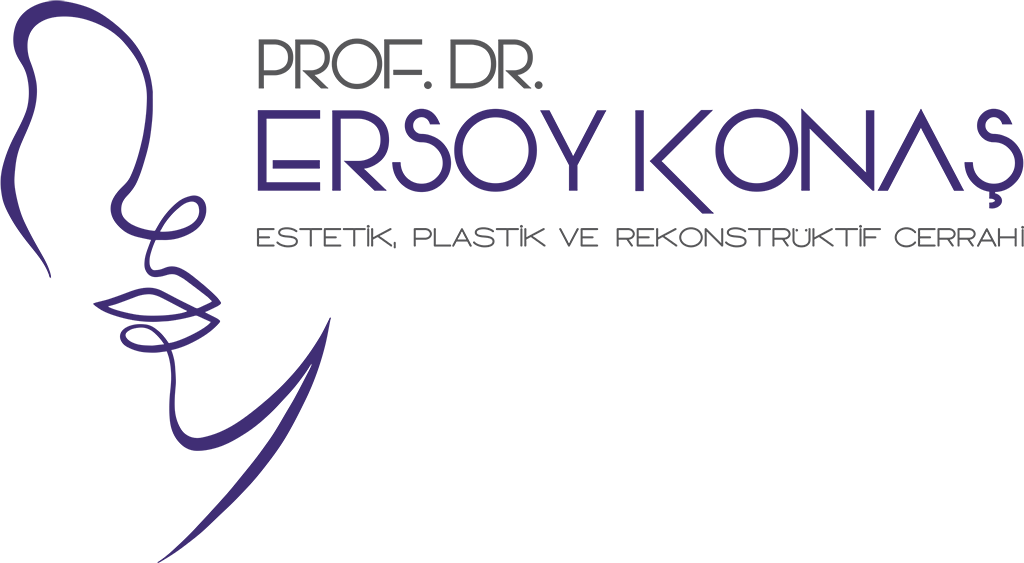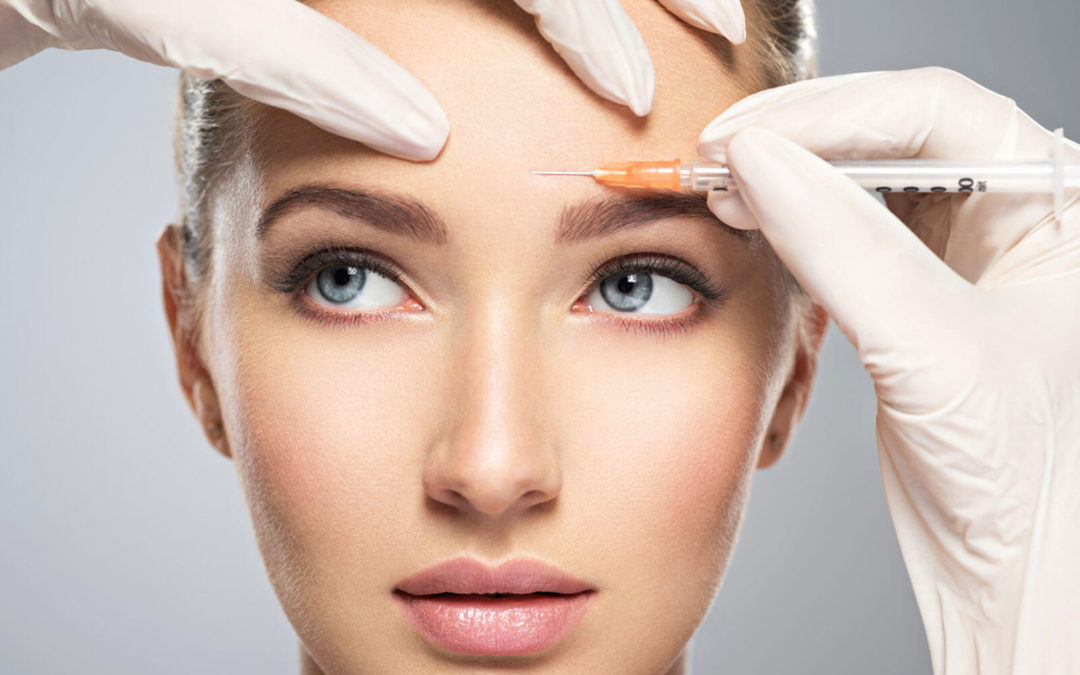Botox is one of the most applied non-surgical aesthetic interventions all over the world. It temporarily blocks the muscle contraction in the injection site and thus removes or lessens the appearance of wrinkles in that area and prevents the formation of new ones. Botox is a bacterial toxin produced in a laboratory environment which is harmless when used appropriately by a specialist physician. It is also used for the treatment of problems such as excessive sweating, migraine and teeth clenching.
What is Botox? What is in it?
Botulinum toxin type A is a toxin produced by the bacterium clostridium botulinum. Botox application was approved by the FDA (American Food and Drug Administration) for medical purposes in 1989 and started to be used. Its use for cosmetic purposes started worldwide with the FDA’s approval in 2002.
How does Botox affect the skin?
When injected under the skin, it blocks the signals from the nerves to the muscles, preventing them from contracting. In this way, wrinkles and lines caused by contracting muscles are lessened and disappear.
For what purposes is Botox used?
This treatment has three main application areas: Control of muscle movement, excessive underarm sweating (Hyperhidrosis), and cosmetic improvement.
Where is Botox applied on the face and body?
On the face, it is applied on areas where wrinkles and lines form most frequently, i.e. eye contour, between the eyebrows, and on the forehead. It is also possible to raise eyebrows and lift nose tip with this application. On the body, it can be applied to the heads, necks and temples for migraine, palms and underarms for sweating), and chewing muscles for teeth grinding treatment) according to the characteristics of the area to be treated.
What should I pay attention to before having Botox?
If you are taking blood thinners, you may need to stop taking your medicine a few days before the procedure to reduce the risk of bleeding or bruising. You should also inform your doctor if you are using muscle relaxants, sleeping pills, or allergy medicine.
What should I pay attention to after Botox?
You can return to your normal life immediately after the application. Doctors recommend not to put your head down for 2 hours and avoid being in the sauna or steam bath for 3 days after the treatment. Mild bruising may occur in the treated areas, which fade away within a few days following the treatment.
How is the recovery after Botox application?
During the process, small bumps occur and these disappear within minutes. Very rarely, there may be leakage from the capillaries and consequently mild bruising. This can be prevented with cold compresses and creams used against bruises.
When are the results from Botox seen?
Normally, you can notice the change in your skin within a few days. The effects on the muscles begin in 2-4 days. It takes about 10-14 days to achieve the maximum effect.
How long does the Botox procedure take?
Although the duration of the procedure varies depending on the area to be treated, it takes 10 minutes on average. It is not necessary to apply an anesthetic cream to the area before the application. However, if required, an anesthetic cream may be applied to the area about 15 minutes before the treatment. You can return to your normal daily life immediately after the procedure.
Is Botox a painful procedure?
Each injection causes mild pain but since the needles used for Botox are very small, the pain is usually minimal. The doctor applies a topical anesthetic cream 10-20 minutes before the injection and the pain sensation are greatly reduced. During the procedure, a cold compress is applied and the feeling of discomfort is minimized.
How often should I have Botox?
This is an application that completely eliminates superficial wrinkles and lessens the appearance of deep wrinkles. Its effect lasts for 4 to 6 months. At the end of this period, the procedure should be repeated, and the duration of the effect varies from person to person. While some factors can increase the duration up to 6 months, some factors may cause it to be limited to 3 months. These factors can be listed as follows:
- Older people may need more frequent repetitions than younger people as their muscle tone decreases.
- Your facial trait and how often you use your facial expressions
- Smoking
- Diet
- Frequency of sunbathing
- Care for the skin
- Frequency of application (repeated applications in some people provide a longer lasting effect. Others may develop resistance to the drug and need more frequent applications. In both cases, it is not recommended to apply it to the same area more often than three months.)
Frequently Asked Questions:
Is Botox harmful?
The procedure is very safe when applied by a specialist doctor with approved Botox brands. There may be slight redness and bruising at the injection sites. Headache may also be experienced on the day of application. It has no known systemic side effects. It does not accumulate in the body. However, poor-quality Botox applied by non-specialists or non-physicians may pose various risks. In addition, incorrect applications and higher doses than necessary can cause abnormal facial expressions and even serious facial asymmetries.
How many times a year is Botox applied?
This is a temporary procedure. The effect wears out over time and disappears in about 6 months. Having it done regularly increases the effect.
Is Botox snake venom?
No. Although there is such a rumor, especially in the past years, it is not made of snake venom or any other poison. As mentioned above, it is actually a protein-based toxin.
Where Botox is used other than face? What conditions are treated with it?
Botox is also used successfully in other medical areas. Foremost among these; armpits and hands against excessive sweating, neck and head area against migraine, jaw muscles against teeth grinding.
How is migraine treated with Botox? Which doctor treats migraine?
Migraine treatment with Botox is applied by neurologists. Before this treatment, the neurologist examines you in detail and makes a definitive diagnosis. Applications are made to certain areas of the temple, nape, and neck at certain intervals for patients eligible for treatment.
How is teeth clenching treated with Botox?
Stress-related teeth grinding, or in medical terms, Bruxism, usually happens due to the tension in the masticatory (chewing) muscles. This application temporarily relaxes the chewing muscles and eliminates this problem. Both plastic surgeons and specially trained dentists can perform the treatment for clenching teeth.
How is excessive sweating treated with Botox?
Botox for sweating blocks the nerve impulses to the sweat glands that lead to excessive sweating. It is a highly effective treatment method. Underarms and hands are the most common areas for excessive sweating.
If I regret after getting Botox…
This is one of the applications with the highest patient satisfaction. As a result of the applications made by the specialist doctor, patients usually express that they are very satisfied with the result. But even in the case of regret, it should be remembered that the result is not permanent.
Will my face be more wrinkled after the effect of the procedure wears off?
This is a misconception. On the contrary, long-term Botox use slows down the aging process. However, most people get used to their new look and their old look may seem not pleasant to them.
Who cannot have Botox application?
Doctors do not recommend this application for pregnant or breastfeeding women. Apart from that, it may be inconvenient to have Botox in the presence of some diseases and while taking some medications. Specialist doctors consider each patient in these aspects before the application and make the decision accordingly.
Botox price 2022, Botox prices
One of the questions asked on the Internet by the patients who decide to get Botox is “how much Botox costs”. Price varies depending on several factors such as the city you are in and the brand of Botox. You can receive information on Botox prices from your plastic surgeon.
For more detailed information, please click the link https://ersoykonas.com/botox/, or contact us by phone at 0 536 511 40 51 or by e-mail at ersoykonas@gmail.com.
Follow us: @ersoykonas



